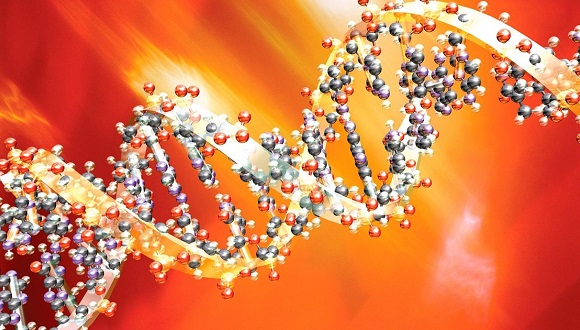Photo: National Geographic.
If we had to choose a day of special significance in the field of human genetics, it would be
April 25, World DNA Day.
This date—dedicated to commemorating the moment when the double helix structure of deoxyribonucleic acid (DNA) was described—this time celebrates
the 70th anniversary of what is considered one of the most significant scientific discoveries of the 20th century and one with the greatest impact on humanity. .
This is how Hilda Roblejo Balbuena, doctor of Sciences, secretary of the Cuban Society of Human Genetics and head of Teaching-Research at the National Center for Medical Genetics,
assured Cubadebate
.
The specialist recalled that it was in 1953 when James Watson (American biologist) and Francis Crick (British physicist) proposed the double helix model of DNA, by publishing the article "Molecular Structure of Nucleic Acids: A Structure for Deoxyribose Nucleic
Acid "
, in the journal Nature.
Watson and Crick described a model of the structure of DNA, in order to determine how genetic material is replicated and transmitted through generations, establishing the mechanisms by which genetic diseases originate.
“DNA is the molecule of life, the molecule that contains the genetic information for the functioning, development and growth of each cell.
The biological functions include the storage of information, which is contained in the genes;
logically these also have the information for protein coding”, explained Roblejo Balbuena.
He added that DNA replication also ensures the transmission of information to daughter cells during cell division.
In his opinion, advances in the description of the structure of DNA—such as the DNA sequence that appears mostly published for the first time in 2003 and which concludes a first stage of the Human Genome Project—have allowed advance in genomic medicine.
“This is implying a paradigm shift in medical care, by allowing in many cases to find the genetic bases of diseases and, in parallel, the development of genomic medicine, which goes from focusing on diseases to focusing on the individual characteristics of the diseases. people based on the information that is in their DNA”, commented the interviewee.
Having managed to decipher and understand the structure of DNA and then its sequence, the geneticist affirmed, has implied a change in the way of interpreting patient care
, since we are in a position to identify, for example, how capable an organism is of metabolize certain medicines, for which diseases we have a greater or lesser predisposition...
Today is World DNA Day, in honor of the discovery of its double helix in 1953 and the completion of the Human Genome Project in 2003.
Both DNA and RNA are crucial to life, the transmission of genetic information, and biotechnology. .
#WorldDNADay pic.twitter.com/QoVHWJSjAq
— Exheus (@Exheus) April 25, 2023
Particular characteristics that underlie our DNA
Roblejo Balbuena mentioned some of the characteristics that each individual has in its genome and that not all of us know:
DNA is in all of our cells and is made up of around six trillion nucleotides (the structure that makes up DNA).
These nucleotides have nitrogenous bases known as letters, which define which amino acids are going to be synthesized or translated into proteins, which in the end is the way our traits are expressed in the phenotype.
A distinctive feature of our DNA is that we are almost entirely coincidental.
Humans agree on this genetic information in more than 99%.
We all have about six trillion nucleotides, and only three to five million of those six million are variants among humans.
That is,
the largest number of
nucleotides
are coincident
, more than 99%.
Therefore, this small difference is part of the differences that we also have in our genotype, say in height, skin color, and other phenotypic traits such as our attitudes towards sports, intelligence... although these are traits on which the environment also has an important influence.
Of these three to five million variants that are in our nucleotides, which mark the difference between one individual and another, 150,000 are not in databases, and 60 of these variants have not been inherited by our parents.
See also:
Genetically speaking: Dossier "Indigenous Cuba", DNA could change history (+Podcast)
